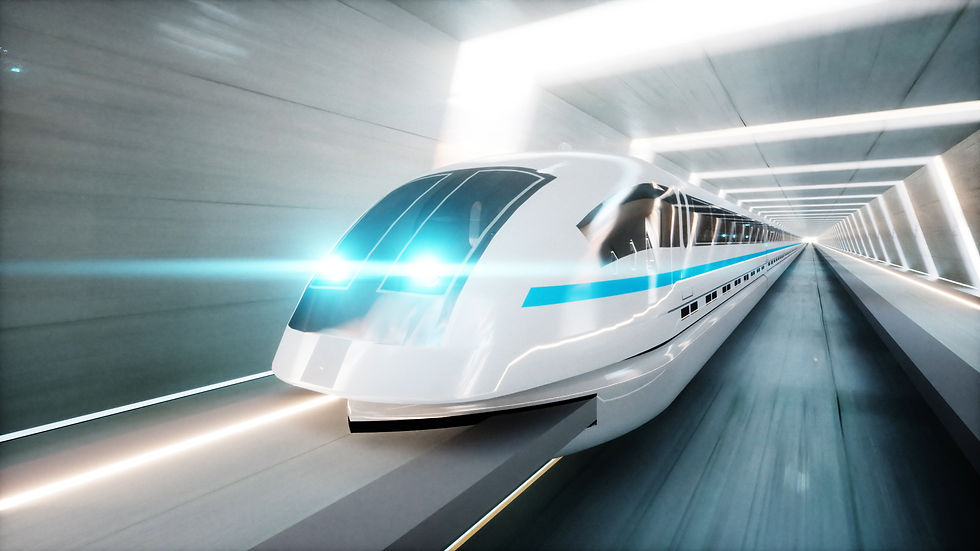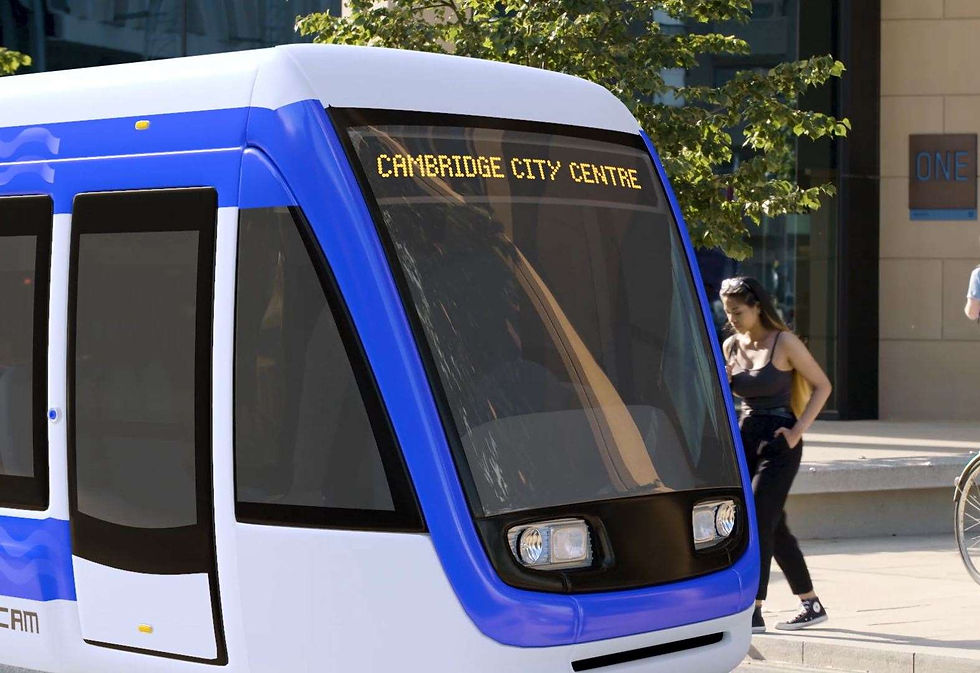"The Future of Connectivity: Envisioning Transport 2050 in the East"
- Eastern Powerhouse
- Jun 7, 2024
- 4 min read
Updated: Jun 10, 2024
The East of England is one of the most productive economies in the United Kingdom, but it has one of the poorest transport networks. It is time to be ambitious for the region. The East deserves a high quality, modern transport network. The region should be recognised as a leader in science, technology and green energy leader and its transport system should reflect that. Our airports and railway stations should be modern gateways into the region. Railway stations should be transformed into business hubs that reflect the economy of the east. Station gateways should be created in our towns and cities, transforming run-down and neglected areas into economic hotspots. The way we travel in the near future will transform our lives, with autonomous cars and public transport set to revolutionise the way we live. The East should lead the way by creating platforms that invest in our transport networks. The East should embrace new types of public transport and reimagine rural transport solutions. Heavy buses have had their day and autonomous, 24-hour transport solutions are the future. But the future is now and now is the time to invest in new technology.
'

Rail
The rail network in the East is well connected but suffers from a track system that makes rail travel unnecessarily slow. Improvements to the track, allowing faster and more regular trains would be transformational and should be part of any transport strategy.
1.Enhancements to the East’s railway network is urgently required to improve rail travel and boost productivity. The following schemes represent the strategic priorities for the region, which we would like a new government to take forward:
The Ely Area Capacity Enhancement (EACE) programme. This would enable more frequent freight and passenger services across the region. This would include improved signaling, remodeled junctions, strengthened bridges.
Soham doubling. This would build on the EACE scheme to further increase freight and passenger service frequencies between Felixstowe, Ipswich, Ely and Peterborough.·Measures should include track doubling, line speed and signaling improvements, and a second platform at Soham station.
Felixstowe electrification. This would enable electric freight and passenger services (initially only via London).
Enhancement in Bury St Edmunds. This would build on improvements in the Ely and Soham areas. It would provide a further uplift in freight and passenger capacity.
Essex Thameside improvements.
West Anglia Mainline improvements. This would improve journey times from London to Stansted Airport and Cambridge could be improved by completing a range of upgrades including:
Great Eastern Mainline improvements. This would build on the delivery of Crossrail, new trains and the Beaulieu passing loop.
Newmarket line improvements. Installing a double track between Coldham Lane Junction and Newmarket to increase passenger service frequency.
Extension of the planned East West Rail. To include upgrades to the lines between Cambridge and Norwich and Cambridge and Ipswich.
2. Transform railway stations into vibrant business hubs across the region. There are 52 railway stations in the East, most of which are underutilised, despite being on major transport routes. The land around railway stations should be redeveloped, where possible, to provide mixed use development including housing, business premises and lab space for start-ups in the new economy. This should prioritise strategic sites along major transport corridors and close to key sectors in the region.

Roads
Many parts of the region are deemed remote because of poor transport links, while deprivation and poor transport links are closely related. For the East to reach its potential as an economy, major investment into the roads network is needed. The following road improvements are a priority for the region.
Fully dualled carriageway: Of the A47 between Peterborough and Great Yarmouth, the A120 from Harwich via Colchester to Stansted and the M11, the A10 from Kings Lynn to Cambridge.
Upgrade of the A12. The trunk road from Lowestoft to London that runs through Suffolk and Essex should be upgraded to a Motorway.
Northern bypass for Ipswich. To alleviate problems with regular closures to the Orwell Bridge.
Connectivity upgrade to the M11. This would provide access to rural north Cambridgeshire and Lincolnshire.
A dual carriageway link road between the A11 and A14. This would make travel between Thetford and Bury St Edmunds and across the region much easier.
Air
The are four airports offering regular international travel in the region - Stansted, Luton, Southend and Norwich.
Improved road access to Stansted. This would increase capacity to take 45m passengers a year.
Terminal 2 at Luton Airport. This would increase passenger capacity to 32m.
Improved public transport access to Norwich Airport. The airport is 4 miles from the nearest train station.

Autonomous Metro Systems
Work with elected Mayors to develop and fund autonomous metro systems. Transport pods, with a scalable passenger capacity, running on routes no wider than a cycle lane will allow cities in the east of England to adopt high quality systems. And because these systems can run beyond a city into rural towns and villages, the problem of expensive, underutilised rural bus services can be solved. Autonomous transport systems could be built in Cambridge, Ipswich, Norwich, Peterborough and Colchester.

Air Taxi
Legislation for electric air taxis in the East. This technology is within reach and could cut journey times significantly between science parks in the region connecting Cambridge Biomedical Campus, Norwich Research Park, Stevenage Bioscience Catapult and Adastral Park in Ipswich.
Integrated transport systems
Beyond buses: Devolve TfL-style powers to elected Mayors. All powers currently available to Transport for London (including rail, roads, rivers, and cycle superhighway powers) should be available to elected mayors and their administrations. This will help to create the smart, integrated local transport networks which will facilitate the movement of people within the city region and catalyse regional economic growth.
Establish Infrastructure for the East alongside Transport for the East. Establishing a body or extend Transport for the East to cover the whole Eastern region with a broader remit covering wider infrastructure needs, with the task of assessing the scale of deficiencies and developing a targeted programme of investment. This would allow for the development of an integrated Eastern infrastructure strategy.

